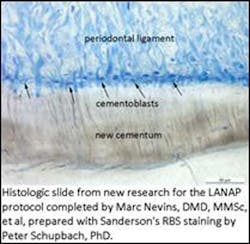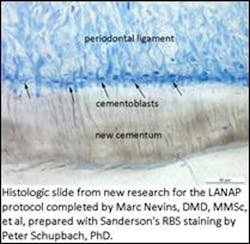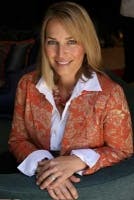Dental sleep medicine -- dentists treat obstructive sleep apnea patients with oral appliance theraphy, expanding their practices
By Emilee McStay© Dreamstime
Every night, an estimated 18 million Americans stop breathing for 10 to 30 seconds, sometimes for a minute or longer, hundreds of times as they sleep. These men and women suffer from obstructive sleep apnea (OSA) and, if left untreated, are at a higher risk for excessive daytime sleepiness, high blood pressure, heart attack, stroke, diabetes, obesity, and driving accidents. “The American Academy of Dental Sleep Medicine (AADSM) tries to make it as easy as possible for OSA patients to receive safe and effective treatment,” said AADSM President, Jeffrey Pancer, DDS. OSA patients can use the find-a-dentist feature on the AADSM’s Web site (www.aadsm.org) to search for dentists in their area who practice dental sleep medicine (DSM) and read more information about oral appliance therapy (OAT). AADSM President-Elect Sheri Katz, DDS, said that when patients have OSA, they may feel like they are sleeping a proper number of hours, but the quality of their sleep is often poor. “Most people with OSA cannot achieve or maintain a deep, restorative sleep because every time they go into a deep sleep, their airway collapses and they wake up to resume breathing,” she said. Dental sleep medicine (DSM) focuses on the management of sleep-disordered breathing (SDB), which includes snoring and OSA, with OAT and upper airway surgery. Dr. Pancer explained that OAT involves the customized selection, fabrication, fitting, adjustments, and long-term follow-up care of specially designed oral devices, worn during sleep, which reposition the lower jaw and tongue base forward to maintain a more open upper airway. Oral appliances (OAs) look similar to mouth guards, but should be selected and fitted by a dentist trained in DSM to maintain unobstructed breathing while the patient sleeps. Once a patient is diagnosed with OSA by a sleep physician at an accredited sleep center, he or she may be referred to a dentist or oral and maxillofacial surgeon for OAT or upper airway surgery. “Approximately 25% to 50% of patients with OSA are unable to comply with Continuous Positive Airway Pressure (CPAP), the standard treatment therapy, or do not tolerate it, leaving a large population of untreated OSA patients for whom dentists can offer a much-needed service,” Dr. Pancer said. The American Academy of Sleep Medicine has published practice parameters stating that OAT is indicated for treatment for those patients with mild to moderate apnea if they prefer it to CPAP, or if they cannot tolerate CPAP, or if they are unable to use positional therapy or weight loss to control their apnea. OAs are also recommended for severe patients if they are unable to tolerate CPAP.According to Richard Drake, DDS, who has specialized in DSM for seven years and taught AADSM courses for four years, successfully treating OSA can reverse nearly all of the ill effects the disease may have on a patient. “Patients better control their high blood pressure and diabetes, are less tired and sleepy, and therefore tend to lead more active and fulfilled lives, take fewer pills, and are less likely to fall asleep while driving. Their minds function better and they think more clearly, they control their weight more easily, and have more energy to exercise and do the things they want to do,” Dr. Drake said. He said the most rewarding part about dental sleep medicine is helping to turn someone’s life around. Dr. Drake said he was making an appliance for a gentleman who had his 25-year-old son along at the appointment and learned that the son had been in and out of school for years, was unable to hold down a job for more than a month due to sleepiness, was taking meds for depression, and was living at home with his parents. “We tested him for sleep-disordered breathing, and when the test came back and showed that he suffered from severe sleep apnea, we made him an oral appliance,” Dr. Drake said. “He wore it religiously, and a follow-up study confirmed that it was treating his disease successfully. Two years later, he had moved out of his parents’ house, held a part-time job, had a girlfriend, was no longer taking anti-depression meds, and was about to finish school.” Dr. Drake said that many dentists practice DSM because they enjoy helping people improve their lives and find it to be financially rewarding and physically less demanding.“Dentists are recognizing the benefit of adding DSM to their practice,” Dr. Pancer added. “The AADSM has seen a 135% jump in our membership over the last five years.” Dr. Pancer said that when he learned about the AADSM in 1996, it consisted of approximately 60 members, in contrast to more than 1,600 members today. Despite the AADSM’s increase in membership, Dr. Drake said that there is still a growing need for dentists qualified in DSM because sleep physicians have difficulty finding a dentist to whom they can refer their OSA patients.Dr. Drake said that the number one reason dentists shy away from practicing DSM is that they don’t understand it and don’t take the time to educate themselves. He recommends that dentists take advantage of the mentorships, study groups, peer-reviewed journals, and introductory courses available through the AADSM to learn more about OAT. Dr. Pancer added that dentists who have experience in DSM can take advanced courses in OAT or sit for the American Board of Dental Sleep Medicine (ABDSM) exam. He said that the diplomates of the ABDSM represent the highest level of education and training in DSM. Established in 1991, the AADSM hosts an annual meeting, offers educational courses for dental students and practicing dentists, distributes cutting-edge information through peer-reviewed publications, pamphlets and DVDs, and establishes and maintains appropriate treatment protocol. Dr. Katz said that practicing DSM requires dentists to broaden their scope of knowledge to understand the field of sleep in general and the pathophysiology of OSA in addition to their skills as a dentist. “Deciding to learn about and practice dental sleep medicine is about becoming comfortable ‘switching hats’ and feeling excited about working in a different and new mindset,” she said. Dr. Katz said that many dentists who enter dental sleep medicine are looking to try something challenging. These dentists must learn about other disorders in the field, such as parasomnias, insomnia, and narcolepsy, in order to know what they cannot treat with oral appliance therapy, as well as work closely with sleep physicians and other medical professionals.Educational institutions have also started recognizing the importance of training dentists in DSM. Tufts University in Boston, Mass., launched the first Dental Sleep Medicine Program of its kind through the Craniofacial Pain, Headache, and Sleep Center, which is part of the Department of General Dentistry. Through the program, post-graduate dental students will receive both classroom and clinical instruction from experts in dental sleep medicine. Students will work with a multidisciplinary team of dentists, neurologists, chiropractors, physical therapists, pain psychologists, occupational therapists, and behavioral management therapists to help treat sleep-related breathing disorders, such as OSA.“Tufts’ pre-graduate dental students have learned DSM course content for several years,” said Leopoldo P. Correa, BDS, course director of the Dental Sleep Medicine Section at Tufts Dental School. “Some of our students choose to incorporate DSM into their practices upon graduation, while other students leave Tufts with a better idea of how to identify patients who may have OSA and who should get tested at an accredited sleep center,” said Dr. Correa. “By offering a hands-on post-graduate course, in addition to the course content in our pre-graduate and continuing-education programs, more students will gain the skills and in-depth experience they need to integrate DSM into their practices.”Dr Correa said that post-graduate students and residents will participate in patient assessment, polysomnogram interpretation, and the use of ambulatory sleep study monitors when titrating oral appliances. The students will be trained in selecting, fitting, and adjusting the dental devices used to treat OSA and understand the potential limitations and complications of these devices. “I think that in 10 years, DSM will be incorporated into every dental school and that learning OAT will be a requirement for every dental student,” said Dr. Correa. “Dentists trained in DSM offer huge benefits to their patients and society.”
Emilee McStay is the public relations coordinator for the American Academy of Dental Sleep Medicine. Contact her at (708) 273-9366, send her an e-mail at [email protected], or visit www.aadsm.org for more information.


